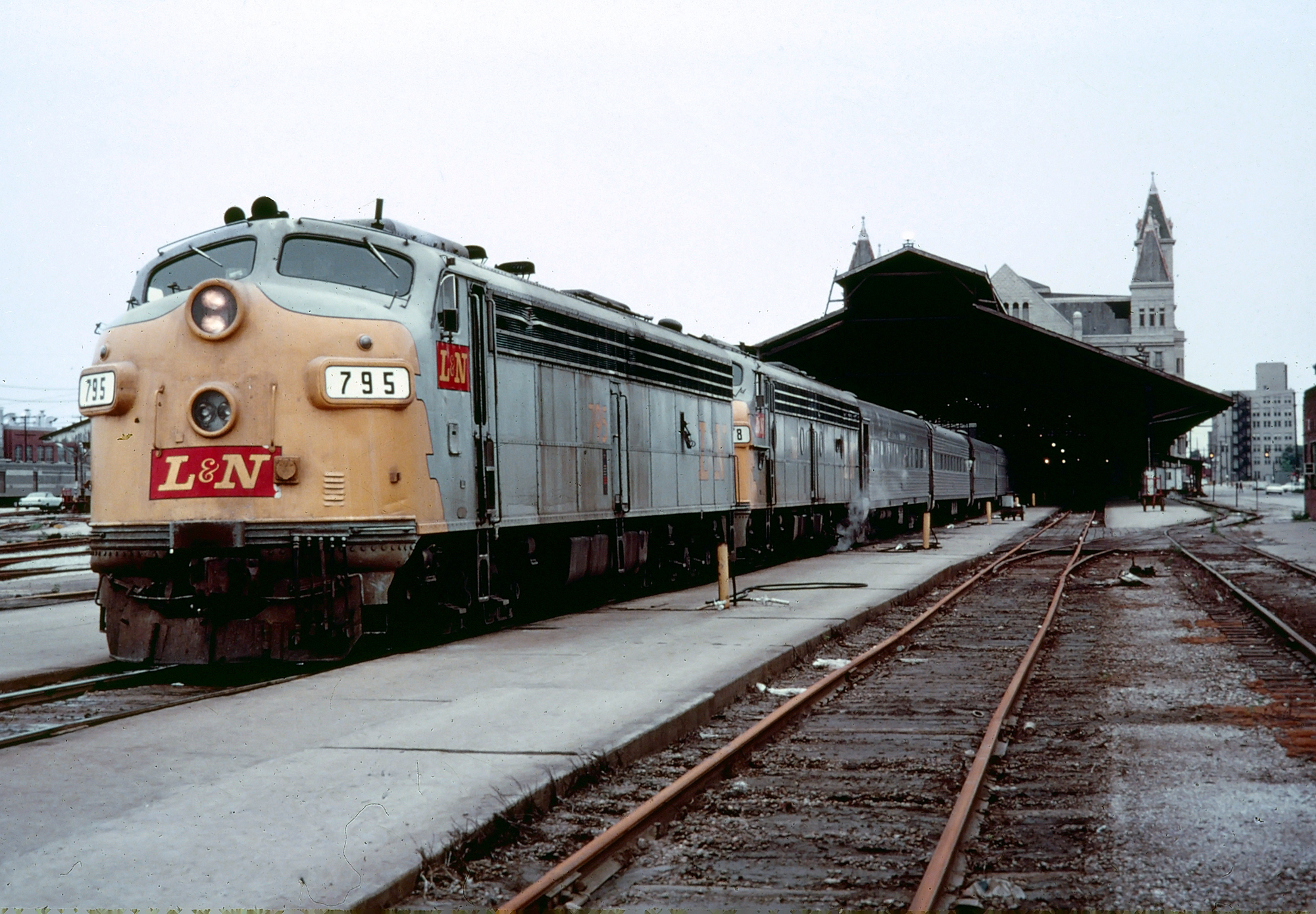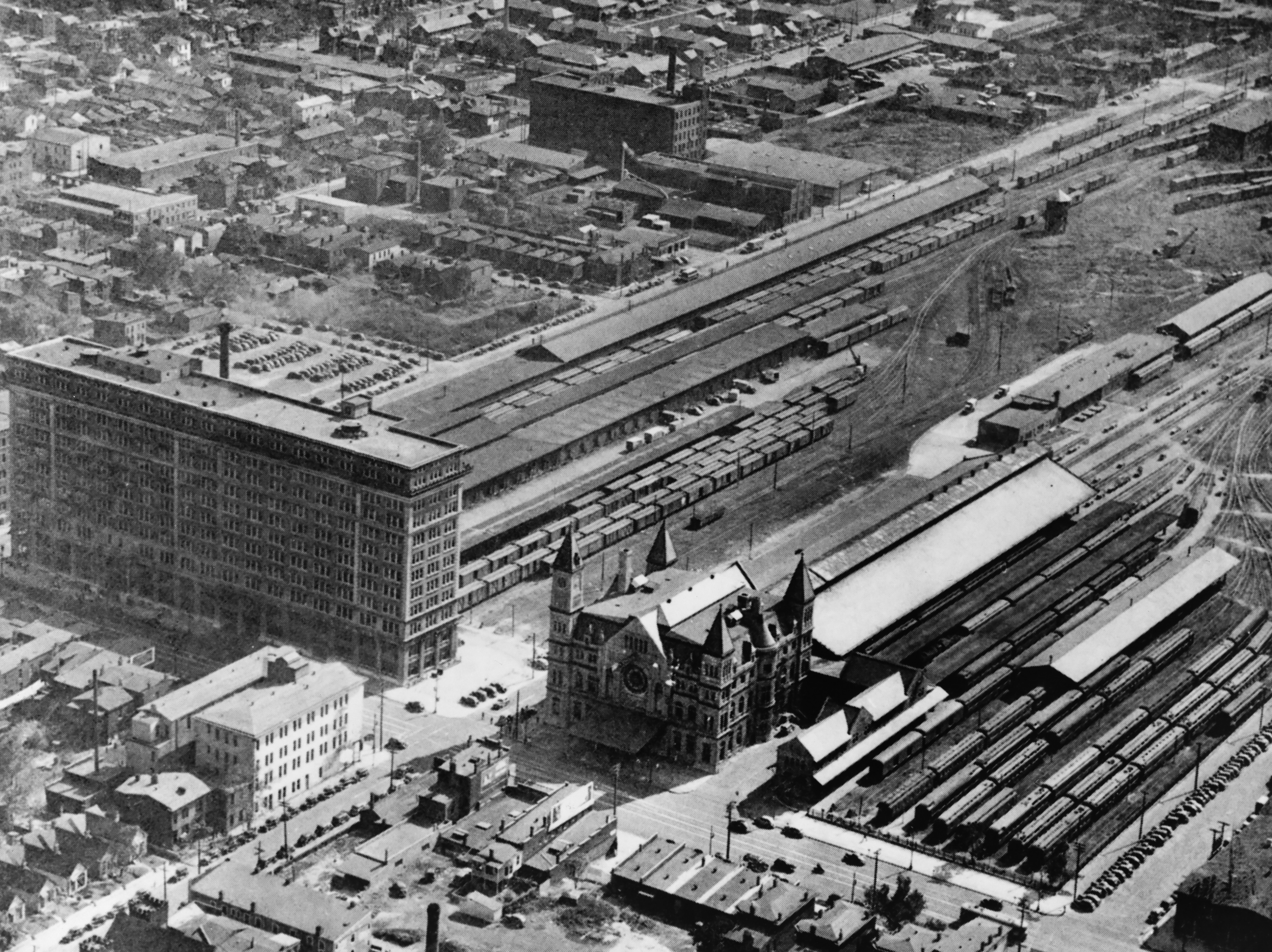Louisville Union Station: Photos, History, Current Use
Published: February 7, 2025
By: Adam Burns
Louisville Union Station, an architectural jewel and a symbol of late-19th-century grandeur, has not only been a pivotal element in facilitating transportation and commerce but also represented the industrial growth of the region during its operational zenith.
Historically, it was one of at least five union stations in the state, with others including Lexington, Covington, Paducah, and Owensboro. In Louisville, it was one of three key stations serving the city, alongside Central Station (Baltimore & Ohio and Illinois Central) and the Southern Railway's own terminal.
Union Station replaced several smaller depots in the city, the most significant of which were located at Tenth and Maple Streets, built between 1868 and 1869, and an L&N station dating back to 1858.
Union Station was officially opened by the Louisville & Nashville on September 7, 1891, which was the principal railroad serving the complex alongside the Pennsylvania and Monon. Today, it is the headquarters for the Transit Authority of River City (TARC) since its restoration in mid-April 1980.
 The Louisville & Nashville's "South Wind" awaits departure from Louisville Union Station in June, 1970. American-Rails.com collection.
The Louisville & Nashville's "South Wind" awaits departure from Louisville Union Station in June, 1970. American-Rails.com collection.Origins and Construction
The station's construction commenced in 1880 but faced delays, and was not finished until 1891 at a total cost of $310,656.47. Local contractors were responsible for the entire construction, except for the clock tower. The architectural design and oversight of the original edifice were attributed to Architect Colonel Henry C. Wolters.
Architect F. W. Mowbray was commissioned to ensure the project embodied the Richardsonian Romanesque architectural style. The structure's exterior was crafted from limestone ashlar, predominantly sourced from Bowling Green, Kentucky, with trims from Bedford, Indiana.
The roof was composed of a slate overlay safeguarding the iron and substantial wood beneath. Noteworthy architectural elements include a clock tower, various smaller towers and turrets, a grand facade, and barrel vaulting. This station operated as a street-running facility.
The station's interior reflected its cosmopolitan character, featuring elaborate waiting rooms, high ceilings, and elegant furnishings that catered to the diverse clientele. Retail and dining options within the station further enriched the experience of travelers, making it a veritable city within the city.
The first floor featured an expansive atrium, dining area, and ladies' retiring rooms. A wrought iron balcony offered a view over the atrium, enhanced by soft illumination from rose-tinted windows on either side. The walls were adorned with marble from Georgia, supplemented by oak and southern pine, while the flooring boasted ceramic tiles.
The Golden Era
Union Station served as the primary gateway to Louisville for numerous travelres, reaching its peak in the 1920s when it accommodated 58 trains daily. As a hub of activity, it facilitated not only the L&N but also the Monon, the PRR, and for a time the Louisville, Henderson & St. Louis Railway (acquired by the L&N in 1929).
The station became a focal point for Kentucky Derby attendees, with the arrival of twenty special trains and the provision of overnight accommodations in Pullman cars, a tradition that persisted until the mid-1960s.
Cultural and Economic Impact
Throughout its operation, Louisville Union Station played an instrumental role in shaping the cultural and economic landscape of Louisville.
The station was more than just a transportation hub—it was a social and commercial center. Its existence encouraged the growth of nearby businesses, hotels, and restaurants, thus contributing significantly to the urban development of the surrounding neighborhood.
Moreover, the station served as a powerful symbol of progress, epitomizing the age of industrialization and technological advancement.
As trains chugged in and out of its platforms, they carried not only passengers but also the promise of economic connectivity and opportunity that was crucial to Louisville's burgeoning identity as a regional powerhouse.
Decline and Closure
Despite its historical and architectural significance, Union Station faced challenges in the mid-20th century, as the burgeoning popularity of automobiles and the expansion of the interstate highway system began to erode the dominance of rail travel. Passenger numbers dwindled, and the station struggled to maintain its prominence in the changing transportation landscape.
Amtrak utilized the facility consistently from May 1971 until October 1976, when operations of the Floridian transitioned to a suburban station near Louisville International Airport, in cooperation with Auto-Train services (Operated privately by the Auto-Train Corporation from May 1974 until April 1981.
This arrangement prevailed until the Floridian service was discontinued. Between December 4, 2001, and July 4, 2003, an adjacent track served Amtrak's Kentucky Cardinal, which connected to Chicago via Indianapolis.
Unfortunately, efforts to reinstate intercity rail in Louisville were hampered. The section between Indianapolis and Louisville was served by jointed rail, restricting speeds to 30 miles per hour, slower than the automobile traffic on Interstate 65.
Preservation and Adaptation
Eventually, the L&N sold Union Station to TARC, which invested two million dollars in restoring the station from 1979 to 1980. Since then, the facility has functioned as administrative offices for TARC.
In October 2010, TARC unveiled plans to refurbish all 278 windows, including 40 stained glass panes, using a grant from the U.S. Department of Transportation.
The ambitious project also included the implementation of a new geothermal energy system. TARC projected that the combined initiatives would result in energy savings amounting to $58,000 per year.
Today, Louisville Union Station stands as a testament to the community's commitment to preserving its heritage. It houses offices and serves as a venue for events and exhibitions, allowing the public to engage with the building's rich history while serving contemporary needs. The station's iconic clock tower remains a beloved fixture, a nod to the city's past achievements and a beacon guiding it toward a promising future.
Legacy
Union Station is a poignant reminder of the city's dynamic evolution and its place within the broader tapestry of American rail history. It encapsulates a period in which railroads were the lifeblood of economic growth and cultural exchange, and it continues to inspire admiration for its architectural splendor and historical resonance.
Through its restoration and adaptive reuse, the facility exemplifies how preserving history can coexist with contemporary innovations. It stands not only as a monument to the age of railroads but also as a symbol of resilience and renewal, embodying the spirit of Louisville in its continuous adaptation to the ever-changing currents of time.
Recent Articles
-
Oregon Railroad Museums: A Complete Guide
Apr 25, 25 03:11 PM
With its rich tapestry of scenic landscapes and profound historical significance, Oregon possesses several railroad museums that offer insights into the state’s transportation heritage. -
North Carolina Railroad Museums: A Complete Guide
Apr 25, 25 02:56 PM
Today, several museums in North Caorlina preserve its illustrious past, offering visitors a glimpse into the world of railroads with artifacts, model trains, and historic locomotives. -
New Jersey Railroad Museums: A Complete Guide
Apr 25, 25 11:48 AM
New Jersey offers a fascinating glimpse into its railroad legacy through its well-preserved museums found throughout the state.


